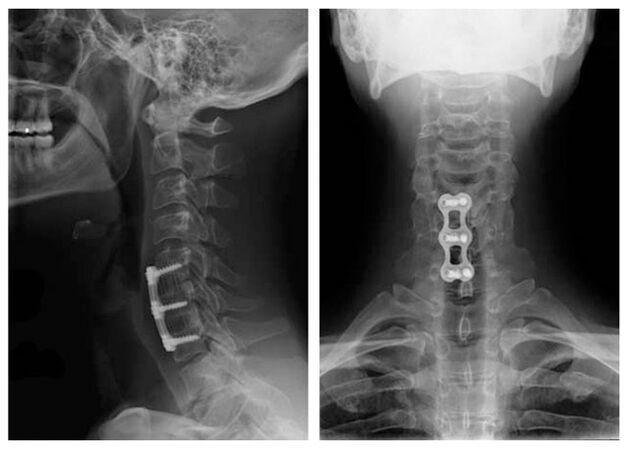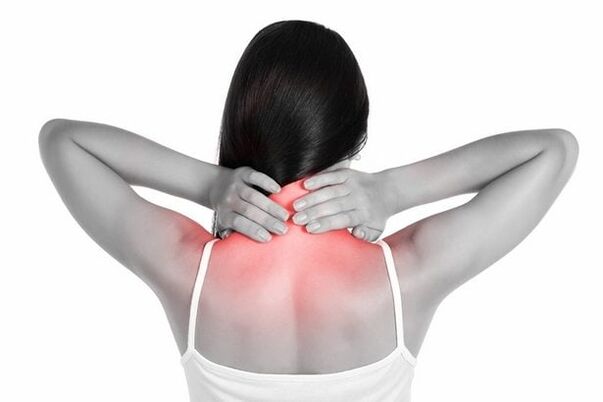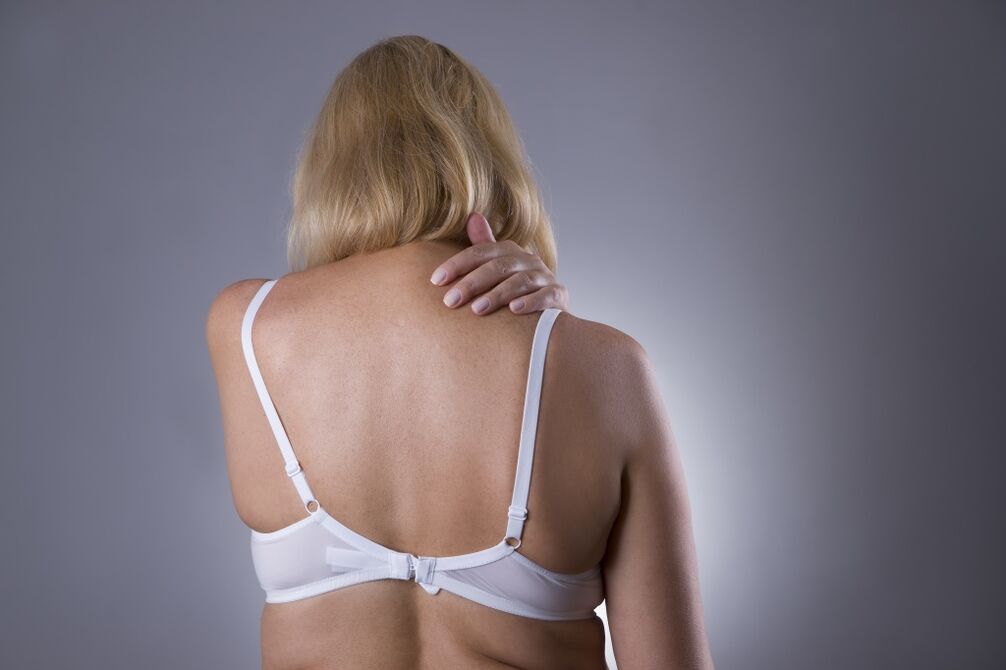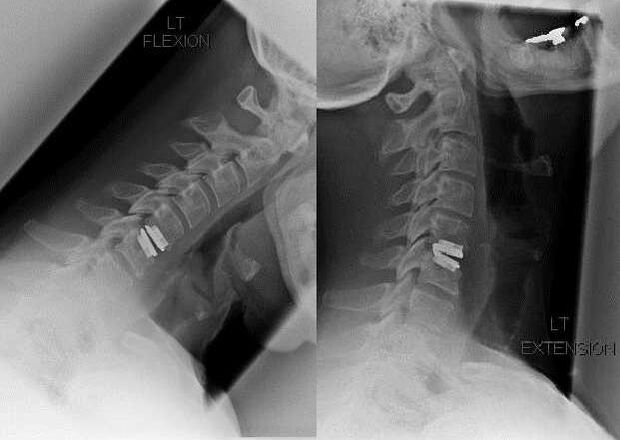The cervix region of the spine is exposed to increased loads, which lead to a balance during the influence of the above -mentioned sources. This provokes the appearance of muscle spasm, which violates blood transport throughout the body. As a result, the formation of anatomical damage is determined.

- A sitting lifestyle.
- Work in connection with long monotonous movements.
- Sport as a severe physical tension.
Osteochondrosis, an illness of the century and this is a reason, and the rest is more of a consequence of a sequence of developing an illness. The manifestations of the disease are diverse, and when a neuropathologist visits the first time, it is not always possible to make a precise diagnosis. In any case, after feeling malaise and the first symptoms, we visit the doctor radiculitis. Diagnostics and treatment with the treatment based on the results of the examination. In the early stage, possibly healing any pathology. Osteochondrosis of the cervix region is a chronic, slowProgressive spinal disease, in which vertebrae, intervertebral discs and slices are affected and destroyed. The vertebrae from the first to the seventh, which belong to the cervix region. In the course of the disease, the intervertebral discs lose their elasticity and strength, flat, relax, their amortization properties deteriorate. Such a deformation is due to changes caused by performance disorders and tissue raving. These violations are one of the natural procedures on the age of the body, but various overloads, posture disorders, injuries, congenital anomalies of the spine and some other causes provoke cartilage and slices early. More and more young people choose a seated job. The lack of properly organized regular loads leads to a weakening of the muscles that repair the spine column, a decrease in metabolism and the bloodstream in the spaces. As a result, due to a physical activity, the spine nerves can be clamped or an intermediate hernia. Wirting -salicular formation (lordosis, kyphosis, scoliosis) is one of the causes of osteochondrosis
- excessive physical activity in sport or severe physical work;
- hereditary disposition;
- Humanization of the neck (walking without a scarf in winter);
- Stress;
- Work on the computer;
- Obesity.
Some of the above causes cause osteochondrosis and other spine. The cervical osteochondrosis develops with excessive stress in this part of the spine. The neck muscles try to lead to cramp, circulatory disorders and consequently to degenerative processes in the spine. This disease is dangerous because the artery of the vertebral artery runs near the area of the lesion that feeds the brain. With the shift of slices, the growth of the fiber tissue occurs on the operation of blood vessels. For the successful treatment of osteochondrosis of the cervix region, it is initially necessary to determine the cause of the occurrence, the prerequisites that provoked and eliminate its development. Until recently, the disease was only found in people aged 45. Now young people are 18-25 years old. The main causes and prerequisites for the occurrence of osteochondrosis are the cervical vertebrae:
- Violation of attitudes in young or adolescents violations.
- Obesity, obesity of different degrees. Additional pounds increase the load of the vertebrae and slices, which leads to degenerative processes.
- Wend spine, scoliosis.
- Back injuries that may have happened in childhood or youth.
- Violation of metabolic processes.
- Work in terms of physical work that can provoke diseases of the spine in various departments.
- Inexpensive lifestyle, sitting work, improper implementation of all exercises.

- Stress, nervous stress negatively influence the general condition of the body, can cause cervical osteochondrosis.
- Translated infectious diseases are often the basic cause.
- The wrong, uncomfortable position of the body during sleep (for example an unpleasant pillow).
- Congenital problems or the presence of hereditary diseases.
The main cause of the occurrence of the disease is a sedentary lifestyle to "stagnate" nutrients and not achieve the target. However, there are others:
- A lack of physical activity and sport as a result of a poorly developed sore muscles
- Excessive physical activity
- Smoking and alcohol abuse
- Abuse of too oily and salty foods, "fast" carbohydrates
- Overweight
- Inheritance
- generic or other injuries
- Initially curved attitude
- Transfered infectious diseases with complications on the spine
- Natural aging of the body
The main causes of cervical osteochondrosis are a sitting lifestyle. Pathologies are most susceptible to drivers, office workers and lovers to sit near the monitor screens. Due to the constant sitting picture and with a lack of physical exertion, you can:
- There are violations of metabolic processes;
- Deplacement of salts in liver, kidneys, neck;
- The salt degree in the lymphatic fluid and blood flow increases.
Violations of the vertebrae are provoked due to the lack of nutrients of the intermittent disc. The possible causes of osteochondrosis of the cervix region are also an unbalanced, wrong nutrition. The most common factors for osteochondrosis of the cervical spine:
- Obesity, hormonal imbalance;
- Strong physical activity, difficult for the human body;
- genetic predisposition;
- constant stress, nervous tension;
- Half damage (rheumatism, scoliosis, etc. );
- Trauma in the neck of the neck, spine;
- Abnormalities in the development of neck departments, flat feet;
- Settlement of the body;
- Age -related changes;
- Sports activity.
Many of the factors mentioned above form the strain on the vertebrae of the neck, which is why muscle cramp occurs. As a result, the circulatory disorders manifest, metabolic processes decrease, which leads to degenerative deviations. Sometimes the cause of the education can be a developing disc that is transferred to bone tissue and tight vertebrae when the osteochondrosis is. It often appears with longer physical exertion.
Methods to prevent the disease
Osteochondrosis is a recurrent degenerative-dystrophic pathology, which is present against the background of the gradual destruction of the intervertebral discs and bone formation. It is necessary to rule out the usual lifestyle. This is low motor activity, obesity, excessive physical activity, a lack of products of products with a high content of trace elements, vitamins.
Progress, osteochondrosis of the cervical vertebrae follows some stages that are classified by various symptoms. Distinguish 4 stages of the development of pathology:

- Basically, the undeveloped smoothing of the neck bend (lordosis) is noticed in the first stage of the disease. The clinical manifestation is insignificant, no severe neck pain can be observed that exacerbate the head wounds and muscle tension. This stage is treated without medication, the main thing is to change the diet, do exercises, etc.
- There is an instability between the vertebrae, its shift, Thuria can occur. The patient has more increased pain that is transferred to the shoulders and hands. The height of the panes becomes lower, for this reason there is an injury to the nerves. The patient feels fatigue, headache, work capacity and inattentiveness.
- The height of the intervertebral discs decreases and narrowed the holes, a hernia that begins to form. The pain of the neck and shoulders increases, the handshake weaknesses, numbness, discomfort and dizziness occur. The diagnosis determines the weak mobility of the neck.
- The destruction of the hard disk is observed in 4 stadiums, they are replaced by connective tissue. Such a current violates several sections of the ridge, which are in different phases of the violation. In humans, coordination changes, pain, dizziness increase, noise in the ears, etc. can occur.
Signs of the disease in the neck differ significantly from the symptoms of osteochondrosis in another area of the spine. Since the cervical vertebrae are nearby, the nerve roots and the spinal cord are clamped. This leads to the creation of such signs:
- Pain syndrome is located in the neck, neck, shoulders, in the arms and in the legs. At the time of connecting to the nerve receptors, the appearance of unpleasant sensations in the shoulder zone, the back of the head, the hands are rebuilt. Due to the cramp in the neck muscles, the blood circulation is disturbed.
- The occurrence of weakness in the upper extremities is determined, which are associated with damage to the functionality of the roots, which contribute to the inclusion of motor nerves and rebuild the muscle tissue in the hands.
- Due to a decrease in sensitivity, the upper limbs are converted in them, violations of the roots in which there are sensitive nerve endings.
- When you turn your head, painful sensations occur, you can also hear a crunch. This is explained by damage in the small joints of the cervix area, a decrease in the degree of the intervertebral discs.
- The patient complains of inadequate strength, the occurrence of tiredness, dizziness and coordination disorders. The vertebral artery is pressed due to the shift of the spine elements. For this reason, the blood circulation worsens, which leads to a weakening of blood supply to the occipital section and the cerebellum.
- The appearance of problems with vision, loss of sensitivity in the language has been determined.
The symptoms for cervical osteochondrosis in women do not differ from signs of men. Women who are 45 years old and older, in which such a disease is diagnosed, find deafness and tingling in the upper limbs in a dream.
Methods for the treatment of neck osteochondrosis
The main signs of an osteochondrosis of the cervix region include:
- Pain in the back of the head, neck, arm and shoulder, which intensify on the arm when sneezing, coughing and minimal stress;
- Burn between the shoulder blades, tingling in legs or arms, numbness;
- Pain and crunch in the neck that occur during tilt and head;
- Fatigue, weakness;
- Fainting and dizziness that arise from sharp headlamps;
- The headache that normally begin in mind spreads the temples and the crown.
Other signs of cervical osteochondrosis are noise in the ears, hearing impairment and a decrease in visual acuity. Sometimes the disease makes itself through the pull of pain in the heart area. At the first sign of an osteochondrosis cervical, consult a doctor who carries out a comprehensive examination. In this case, such diagnostic methods such as MRI, laboratory studies, ultrasound and EKG can be used. As well as the collar from Shantsa - are elastic with plastic or metal inserts, gesture. The devices vary in height, the degree of fixation and design of fastening elements. It all depends on the neglect, the characteristic symptoms of the clamping of the radicular nerve and other factors. How to heal cervical osteochondrosis or reduce its manifestation with medication:

- Anti -inflammatory medication not -steroidal type. Medicines relieve swelling, pain, relieve the patient's condition.
- Vitamins B with osteochondrosis of the cervix region. Wear to accelerate metabolic processes in soft tissues.
- Recovery stimulants. They help to restore the cartilage tissue on a damaged hard drive.
- A group of medication that helps to relieve muscle cramps.
- Anesthesia.
The cervical osteochondrosis is treated with conservative methods and treatment is always comprehensive. Medicine therapy is the same for osteochondrosis of a department: use medication from certain pharmacological groups, but the selection of specific medicines from these groups, dosage and duration of the intake is selected for each patient individually. The X -Ray image of the cervical spine after a surgical treatment of C5 -C7 vertebrae is supplemented by a temporary wearing of a Channz collar or its varieties. Due to the fixation of the cervical vertebrae, the osteochondrosis of the cervix region is treated faster. This additional orthopedic device helps with coping with pain, normalizes the blood flow through the vessels of the neck and improves the general condition of the patient.
The severity of the symptoms of the disease of cervical osteochondrosis depends on the degree of destruction of the structures of the vertebrae. The symptoms are reinforced with the growth of the bone tissue with the formation of osteophytes, the radicular syndrome (root pain in the bone of the nerve), the Schwandebralernie (lead of the disc in the vertebral canal). The first signs of the disease are periodic headaches on the neck, pain in the neck, crunch and clicks in the vertebrae when they turn your head, sometimes a slight tingling. Over time, the symptoms grow and the intensity of the pain intensifies. It is difficult to raise the hand from the defeat - immediately a shot is in the shoulder or neck. The restriction of the head movements due to pain often occurs in an unpleasant position in the morning after sleep. The disease means that the roots of the peripheral nerves are pressed (roying syndrome) and causes pain along these nerves. It is possible to numb your hands or fingers, a violation of the sensitivity of certain skin areas that are innocent by a pinched nerve.




















